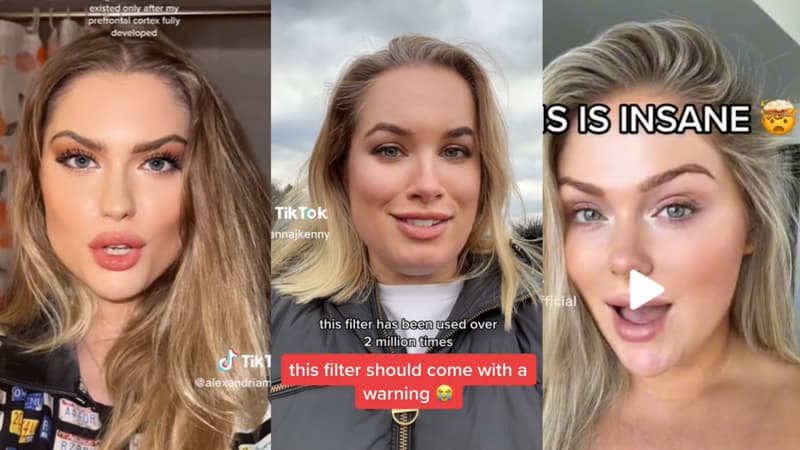On Snapchat, Instagram, or TikTok, you must have already used a filter for a photo or video. Humorous or embellishment filters that have multiplied over the years to invade the networks. And like everywhere, artificial intelligence has also interfered in this sector. The “IA: le grand test” program by BFM Business and Tech&Co was able to return to this widespread aspect of artificial intelligence in our daily lives.
Because when you type in the TikTok search bar when you want to find a filter to save a video, there are now dozens of filters that claim to use AI. The goal is, for example, to generate avatars in manga or painting style, in the same way as Midjourney. The “AI Manga” filter, for example, accumulates 2.2 million videos.
Another TikTok filter also gave a lot of talk a few months ago: the Bold Glamour. 1.5 million videos and almost 1 billion views: this beautifying filter has quickly become a phenomenon. However, it is still quite harmful because it modifies the face in a very natural way and uses AI to be more precise than conventional filters, with one great advantage: even putting your hand in front of it does not move.
Accessible tool for everyone
But where is the artificial intelligence hiding in these tools? Unlike regular filters, which add 3D images to a face, these new filters appear to blend in with faces. Therefore, the filter uses a GAN (for Generative Adversarial Network or generative antagonistic networks) that puts two competing networks in competition. In this case, the camera was rolling on one side and the desired glamorous look on the other.
And it is this competence that makes it possible to refine the work and find a kind of satisfying in-between. But before, this type of tool was only used for specialized software. Today, they are used for a slightly more recreational use and above all within the reach of billions of users and especially young women, sometimes quickly self-conscious about these ideals of beauty. A phenomenon that can quickly lead to dysmorphophobia, that is, the obsession with an imaginary defect or imperfection on the face or body.
Conquering chatbots
And where social networks used to be image platforms, they have also become text platforms with the advent of chatbots on many of them. TikTok and Instagram are working on that in particular.
TikTok has introduced Tako to help find better videos on its platform. Instagram prepares a chatbot to answer questions or give advice to users. The latter will be able to choose between 30 artificial intelligence personalities and the latter will be able to offer them help in writing messages.
But the chatbot that has been talked about the most in recent months is Snapchat’s My AI. An intrusive chatbot at first, with questionable words after a few uses but which has been able to polish and improve over time, to finally offer a certainly fun tool, but whose usefulness, like the rest of the AIs on social networks, remains to be demonstrated.
Source: BFM TV


